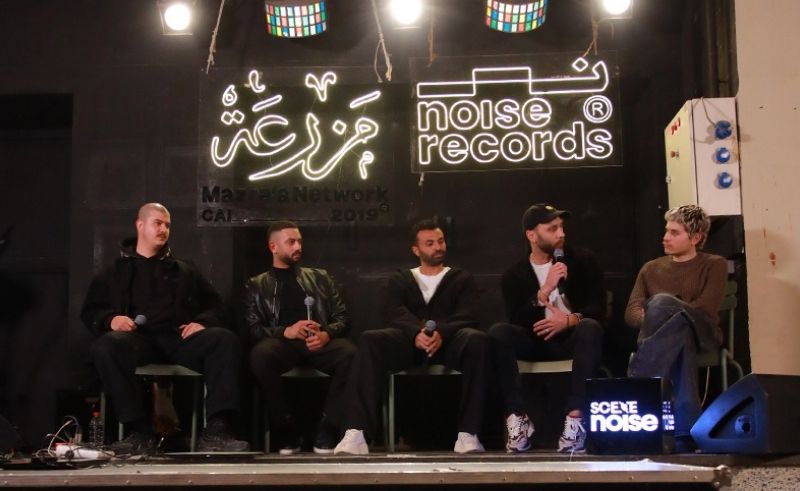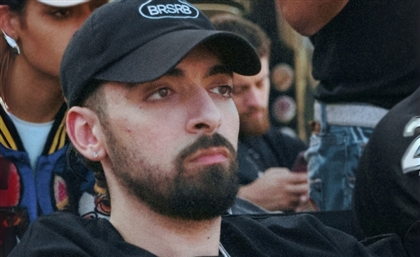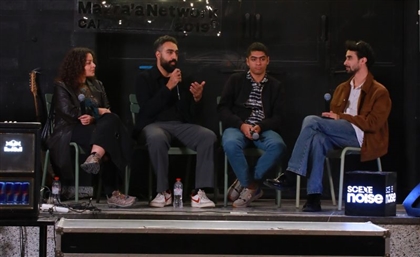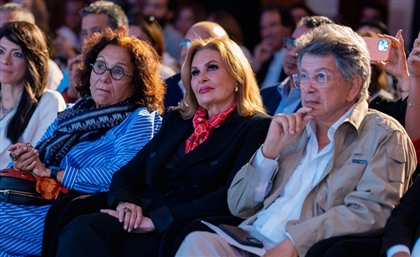Ferkesh Live: Music Execs on Shaping Artist Identity in the Industry
An inside look at how artist image is built — or bent — through the eyes of Egypt’s top music executives.

There was a time when artists emerged with nothing but raw sound and instinct. But the modern music machine doesn’t just release artists — it curates them. Somewhere between bedroom studios and Spotify algorithms, the industry began refining more than just music.
It’s no longer about whether a track sounds good. It’s about whether the artist’s identity is coherent, clickable, and consistent across every platform. Visuals, tone, PR strategy, branding — more and more, these shape the artist as much as the music does.
At Ferkesh Live, a first-of-its-kind gathering held at the French Institute in Mounira on March 24, 2025, the spotlight turned to the people who often shape the artist: music executives. Co-hosted by SceneNoise and Mazra'a Network, in collaboration with Red Bull, the event celebrated the image-makers defining Egypt’s modern music landscape, with panels, screenings, and talks featuring top creatives from across MENA.
In the Industry panel hosted by SceneNoise, four of Egypt’s most influential music executives sat down to dissect the evolving role of artist identity in a business-driven world. These weren’t A&R reps and managers talking numbers — they laid bare the contradictions: art and commerce, creativity and marketability, control and collaboration. Yaseen Azzouni (Lead A&R at TMTM and Co-founder of MOSHTRQ), Ahmed El Wassimy (Managing Partner at Drop Management), Yehia Zakarya (Founder & CEO of M Town), and Mohamed El Shaer (Managing Director at The Basement Records) delivered what was, at times, a masterclass and, at others, a candid reckoning.
It wasn’t always about “the brand.”
But today, artist identity often isn’t a byproduct of making music — it’s the foundation. And in a hyper-competitive market like Egypt’s, that foundation has to be both authentic and strategic.
Yehia Zakarya, founder of M Town, explained how record labels are no longer just gatekeepers. They’re partners in an artist’s emotional and creative growth. “We’re already in the end making art,” he said. “So everyone has to be their own self.” His approach centers on enabling freedom through structure. “Our role is to provide all the factors and conditions that make the artist comfortable in their own skin, so they can bring out his most authentic self.”
After a pause, he added, “There will always be experimentation. Sometimes the result isn’t good, but you can’t call it bad. What matters is that we help guide them in the direction they need.”
That sense of guidance — not dominance — was a recurring theme. In a landscape where “independent” is often equated with “authentic,” and self-releasing artists flood platforms by the thousands, labels walk a fine line between nurturing and steering. As Ahmed El Wassimy put it, “The most important thing is that we make the artist feel comfortable, while nurturing a mindset where he becomes the CEO of his own company.”
In his view, today’s artists are no longer just musicians — they’re businesses, brands, and strategists. “We identify the gaps and help fill them,” he added. “That’s the key — nurturing the artist’s business brain without losing the emotional one.” In a region where many emerging musicians lack access to formal training in music business or brand development, this kind of support can be transformative.
So how do you build an image that feels real and marketable?
For Mohamed El Shaer, it starts with what he calls the “80/20 rule.” “Eighty percent is finding a strong identity,” he said. “Twenty percent is adding something unique that makes you stand out.” It’s a formula that recognizes that before you can be different, you need to be grounded. For many artists — especially those still developing their sound — that grounding can feel elusive. That’s where production teams, A&Rs, and managers step in.
Still, the pressure to be “relatable” to mass audiences can flatten uniqueness if it isn’t carefully handled. “Anything the artist tries to do to please people’s taste — they’re never going to please everyone,” El Shaer said. “And that’s our role as a record label: to guide them to the place where they’re supposed to be.”
When asked about media perception, the panel noted that today’s reporters, editors, curators, and commentators often hold more influence over how an artist is perceived than the artist or their music.
“Media is a tool,” said Yaseen Azzouni. “A tool for the artist’s team to transmit a message.” For him, the stakes are high. “I’m not worried about them writing something critical as much as I’m concerned with them conveying the correct image for my artist.”
This new era of independence is a double-edged sword. On one hand, artists have more control than ever. They can release music on their own terms, build fanbases directly, and shape their image without gatekeepers. On the other, that same freedom comes with pressure — managing content calendars, PR, sponsorships, and mental wellbeing, often alone.
That’s where labels, at their best, come in. Beyond resources and distribution, they offer structure. And when done right, they champion representation, financial stability, authenticity, and long-term growth over short-term hype.
So who’s really shaping the artists we see on our screens and hear in our headphones?
Are those identities true to the person behind the music — and what happens when they’re not?
Watch the full panel below:
Trending This Week
-
Nov 26, 2025


























